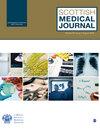Radiation safety awareness and practices amongst orthopaedic surgeons in Scotland
IF 1.2
4区 医学
Q2 MEDICINE, GENERAL & INTERNAL
引用次数: 2
Abstract
As orthopaedic surgeons we use x-rays every day; not only when diagnosing pathology but often to assist in operative management of said pathology or ensure satisfactory outcomes for our patients in clinic. An awareness of the correct use of ionising radiation in the form of fluoroscopic imaging is therefore of great importance to reduce intraoperative exposure and has led to the development of the As Little As Reasonably Achievable (ALARA) principle. The primary aim of this study is to determine the knowledge and practises of radiation safety amongst orthopaedic surgeons in Scotland. Secondary aim is to assess the prevalence of back pain and relation to lead gowns. A google forms survey containing 20 questions about both an individual's radiation practises, and knowledge and departmental practises were distributed to all 4 deaneries in Scotland. In total 72 responses were received from 20 hospitals across all 4 Scottish deaneries. This included 28 Consultants, 23 Senior trainees and 21 Junior trainees. We found that the level of radiation training and knowledge varied considerably across seniority and the nation. Of those surveyed 100% reported always wear lead aprons/gowns however only 46.2% (n = 34) frequently or always wear thyroid protection when using X-rays. Only 55% (n = 40) of those surveyed had completed a radiation safety course with this being far less likely amongst junior trainees (29%, n = 6) than amongst Consultants (82%, n = 23) and senior trainees (48%, n = 11) (p < 0.0001). To our knowledge this is the most extensive survey into the radiation practises of Orthopaedic Surgeons in the literature and shows the need for increased education and awareness of radiation safety practises, particularly amongst junior trainees.苏格兰整形外科医生的辐射安全意识和实践
作为整形外科医生,我们每天都使用x光片;不仅在诊断病理学时,而且通常是为了协助所述病理学的手术管理或确保我们的患者在临床上获得满意的结果。因此,正确使用荧光透视成像形式的电离辐射对减少术中暴露具有重要意义,并导致了合理实现尽可能少(ALARA)原则的发展。本研究的主要目的是确定苏格兰整形外科医生对辐射安全的认识和实践。次要目的是评估背痛的患病率以及与铅服的关系。一项谷歌表格调查包含了20个关于个人辐射实践、知识和部门实践的问题,该调查被分发给了苏格兰的所有4位院长。总共收到了来自苏格兰所有4个院长区的20家医院的72份回复。其中包括28名顾问、23名高级受训人员和21名初级受训人员。我们发现,辐射培训和知识的水平因资历和国家而异。在接受调查的人中,100%的人表示总是穿铅围裙/长袍,但只有46.2%(n = 34)在使用X射线时经常或总是佩戴甲状腺保护装置。只有55%(n = 40)接受调查的人已经完成了辐射安全课程,而在初级受训人员中,这一可能性要小得多(29%,n = 6) 在顾问中(82%,n = 23)和高级学员(48%,n = 11) (p < 0.0001)。据我们所知,这是文献中对骨科医生辐射实践最广泛的调查,表明需要加强辐射安全实践的教育和意识,特别是在初级受训人员中。
本文章由计算机程序翻译,如有差异,请以英文原文为准。
求助全文
约1分钟内获得全文
求助全文
来源期刊

Scottish Medical Journal
医学-医学:内科
CiteScore
4.80
自引率
3.70%
发文量
42
审稿时长
>12 weeks
期刊介绍:
A unique international information source for the latest news and issues concerning the Scottish medical community. Contributions are drawn from Scotland and its medical institutions, through an array of international authors. In addition to original papers, Scottish Medical Journal publishes commissioned educational review articles, case reports, historical articles, and sponsoring society abstracts.This journal is a member of the Committee on Publications Ethics (COPE).
 求助内容:
求助内容: 应助结果提醒方式:
应助结果提醒方式:


